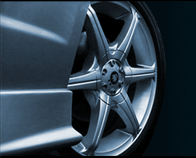FR light weight sport AE86 Levin and Trueno, called "Hachiroku",
were introduced in 1983 for those who enjoy sporty driving
. The AE86 is powered by a 1.6-liter DOHC 4A-GEU engine
which is approximately 23kg lighter than a 2T-G engine.
Two body styles of the AE86 were offered, a 2-door coupe
and a 3-door hatch back coupe. Also the Trueno adopted pop-up
headlamps. In 1985, there was a mild facelift for the AE86
with a new front design face, tail lights and bumpers. Also
a AT model was introduced.
Similarly for the AE92, the introduction of Supercharged
4A-GZE engine added another grade, the GT-Z, which naturally
is a GT-APEX model equipped with a supercharged engine.
The GT-Z was available from teh AE92 - AE101 models and
was replaced with a BZ-G grade in the AE111 with the 2nd
generation "black head" 20 Valve naturally aspirated
4A-GE, a return of the NA flagship Corolla.
|


